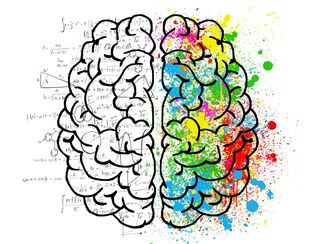Trauma
The Eight (Magical) Phases of EMDR Therapy Demystified
The steps of EMDR therapy broken down for you.
Posted December 6, 2020

The goal of EMDR therapy is to reprocess (the R of the EMDR acronym) on a physiological, emotional, and cognitive level, the experiences that are causing problems, and to integrate positive, affirming experiences necessary for full physical, mental, and emotional health, i.e. transforming your suffering.
EMDR therapy also aims to create the needed conditions to disqualify the inappropriate emotions, beliefs, and body sensations rooted in unhealed trauma.
Phase 1: History and Treatment Planning
This phase generally takes 1-2 sessions lasting 50-120 minutes at the beginning of therapy (arguably longer if it's complex trauma), and can continue throughout the therapy as new problems emerge. In phase 1, the therapist will take your history thoroughly and develop a treatment plan collaboratively with you. This includes discussing the specific problem bringing you into therapy, and its related behaviors and symptoms. Then your therapist will develop a treatment plan with you that defines the specific targets on which to use EMDR:
a) the event(s) from the past that created the problem
b) the present situations that cause distress
c) the key skills or behaviors the client needs to learn for future well-being
In EMDR you do not have to discuss any of your disturbing memories in detail. So while some individuals are comfortable, and even prefer, giving specifics, other people may present more of a general outline. When your therapist asks, for example, “what event do you remember that made you feel worthless and useless?” you may reply, “it was something my brother did to me.” That is all the information needed to identify and target the event with EMDR. The locus of pathology is maladaptive stored info in the body/mind from past memories, some of which can be unconscious.
Phase 2: Preparation
For most, this phase will take 1-4 sessions. For some with complex or heavy trauma, or with certain diagnoses, more sessions or longer sessions may be necessary. In phase 2, the therapist will teach you specific techniques to self-soothe and access positive information so you can handle any emotional disturbance that may arise later on. As long as you can state-change, moving from a place of agitation to calm, you are generally able to proceed.
Your therapist will then explain EMDR, how it works, and what you can expect during and after treatment. Finally, you'll learn a few relaxation techniques as necessary for when emotional disturbances arise during or after a session.
Phase 3: Assessment
In this phase, you will be prompted to access each target in a controlled and standardized way. In this process there are elements of eastern (feeling and sensing) and western (evaluating the strength of trauma-based thought distortions using likert scales) psychology. The first step is for you to select a specific image or mental picture from the target traumatic event (identified during phase 1) that best represents the memory. Then you choose a statement that expresses a negative self-belief associated with the event. The negative beliefs are actually verbalizations of the disturbing emotions that still exist in your body/mind. Common negative cognitions include statements such as “I am helpless,” “I am worthless,” “I am unlovable,” “I am dirty,” etc.
You then pick a positive self-statement that you would rather believe. This statement should incorporate an internal sense of control such as “I am worthwhile/lovable/in control” or “I can succeed.” Sometimes, when the primary emotion is fear, such as in the aftermath of a natural disaster, the negative cognition can be, “I am in danger” and the positive cognition can be, “I am safe now.” “I am in danger” can be considered a negative cognition, because the fear is inappropriate — it is locked in the nervous system although the danger is actually past. The positive cognition should reflect what is actually appropriate in the present.
At this point, your therapist will ask you to estimate how true a positive belief feels using the 1-to-7 Validity of Cognition (VoC) scale. "1" equals "completely false," and "7" equals “completely true.” It is important to give a score that reflects how you feel not what you think on the surface. You may logically know that something is wrong, but we are most driven by how it feels.
Also, you will identify its related negative emotions (i.e. shame, fear, or anger) and physical sensations (i.e. tightness in the stomach, shoulder tension, or cold hands). You'll also use a different scale called the Subjective Units of Disturbance (SUD) scale. This scale rates the feeling from 0 (no disturbance) to 10 (worst) and is used to assess the general disturbance connected to the traumatic memory. The goal of EMDR treatment, in the following phases, is for SUD scores of disturbance to decrease while the VoC scores of positive belief increases.
Although the eye movements (or taps, or tones) are used during the following three phases, they are only one component. The use of the step-by-step eight-phase approach allows the experienced, trained EMDR therapist to maximize the treatment effects for you in a logical and standardized fashion. It also allows both you and the therapist to monitor your progress.
Phase 4: Desensitization
Phase 4 focuses on the memory's disturbance measured your SUD. This phase deals with all your responses (including other memories, insights, and associations that may arise) as the targeted event changes and its disturbing elements are resolved. This phase gives the opportunity to identify and resolve similar events. The therapist will then lead you in sets of eye movements, sounds, or taps with appropriate shifts and changes of focus until your SUD-scale levels are reduced to 0 (or 1 or 2 if this is more appropriate given the situation). Starting with the main target, the different associations to the memory are followed. You may start with a horrific event and then other associations may emerge until complete resolution of the target.
Phase 5: Installation
The goal is to concentrate on the strength of the positive belief that you have identified to replace your original negative belief. For example, you might begin with a mental image of being beaten up by your father and a negative belief of “I am powerless.” During phase 5, you will have reprocessed the terror of that childhood event and fully realized that as an adult, you now have strength and choices that were not there when you were young. Your positive cognition, such as “I am now in control,” will also strengthen. How deeply you believe the positive cognition is then measured using the Validity of Cognition (VoC) scale. The goal is for you to accept the full truth of your positive self-statement at a level of 7 (completely true).
Fortunately, just as EMDR cannot make you shed appropriate negative feelings. It cannot make you believe anything positive that is not appropriate either. So if you are aware that you actually need to learn some new skill, such as self-defense training, in order to be truly in control of the situation, the validity of that positive belief will rise only to the corresponding level, such as a 5 or 6 on the VoC scale.
Phase 6: Body Scan
After the positive cognition has been strengthened to 7/7 or ecologically appropriate, the therapist will ask you to bring the original target event to mind and see if you detect any residual bodily tension. If so, these physical sensations are then targeted for reprocessing.
Evaluations of thousands of EMDR sessions suggest a physical response to unresolved trauma memories. Information from traumatic events are stored in body memory, rather than narrative memory, and often retain the negative emotions and physical sensations of the original event. When that information is processed, however, it can then move to narrative (or verbalizable) memory and the body sensations and negative feelings associated with it disappear.
Therefore, an EMDR session is not considered successful until the client can bring up the original target without feeling any body tension. Positive self-beliefs are important, but they have to be believed cognitively.
Phase 7: Closure
Every EMDR session ends with closure to ensure that you leave at the end of each session feeling better than, or at least not worse, than when it began. If the processing of the traumatic target event is not complete in a single session, the therapist will assist in using self-calming techniques (usually from phase 2) before ending the session. Just as you're in control during the session (for instance, you'll be instructed that it is okay to raise a hand in the “stop” gesture at any time), it is important that you continue to feel in control after the session.
You will then be briefed on what to expect between sessions (some processing may continue, some new material may arise) and what calming techniques could be used to self-soothe outside of therapy.
Phase 8: Reevaluation
Phase 8 occurs in every subsequent session. It guides the therapist through the treatment plan needed to help you fully heal. As with any form of good therapy, phase 8 is vital in order to determine the success of the treatment over time. Although you may feel relief almost immediately with EMDR, it is as important to complete the eight phases of treatment as it is to complete an entire course of treatment with antibiotics for a bacterial infection.
EMDR therapy is not complete until attention has been brought to the contributing past memories, the present situations that are disturbing, and what skills you may need for the future (the aforementioned 3-prongs). Yes, I know it's technical and complex, but it just might save your life.




